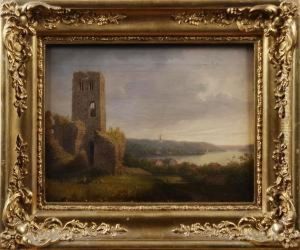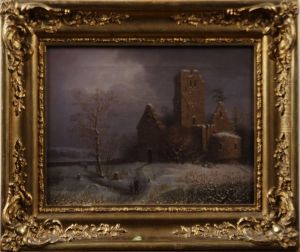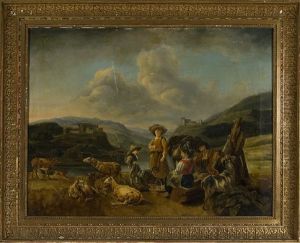Carl Axel Raab Paintings
Carl Axel Raab was a Swedish painter born on July 13, 1863, in Västra Husby, Östergötland. He was known for his landscape paintings, portraits, and still lifes. Raab's work often reflected the beauty of the Swedish countryside and displayed a strong influence from the National Romantic style, which was prevalent in Scandinavia at the turn of the 20th century. This style was characterized by an emphasis on the natural landscape, often imbued with a sense of national identity and romanticized view of nature.
Raab began his artistic education at the Royal Swedish Academy of Fine Arts in Stockholm, where he studied from 1882 to 1887. During his time at the Academy, he honed his skills in painting and was influenced by his contemporaries and the artistic movements of the time. After completing his studies, Raab spent a significant period traveling and studying art throughout Europe, which was a common practice among Scandinavian artists of that period. These experiences allowed him to encounter various artistic styles and techniques, which he then incorporated into his own work.
Upon his return to Sweden, Raab established himself as a professional artist. He participated in numerous exhibitions and received recognition for his work, which contributed to the cultural life of Sweden during the late 19th and early 20th centuries. Raab's landscapes often depicted the Swedish archipelago and rural scenes, capturing the shifting light and seasons of the Nordic environment with a sensitive palette and careful attention to detail.
Throughout his career, Raab remained engaged with the Swedish art scene, though he never became as internationally renowned as some of his contemporaries, such as Anders Zorn or Carl Larsson. His paintings can be found in various Swedish museums and private collections. Carl Axel Raab passed away on January 13, 1943, in Stockholm. Despite not being widely known outside of Sweden, his works still resonate with those who appreciate traditional Swedish landscape painting and the National Romantic movement.


